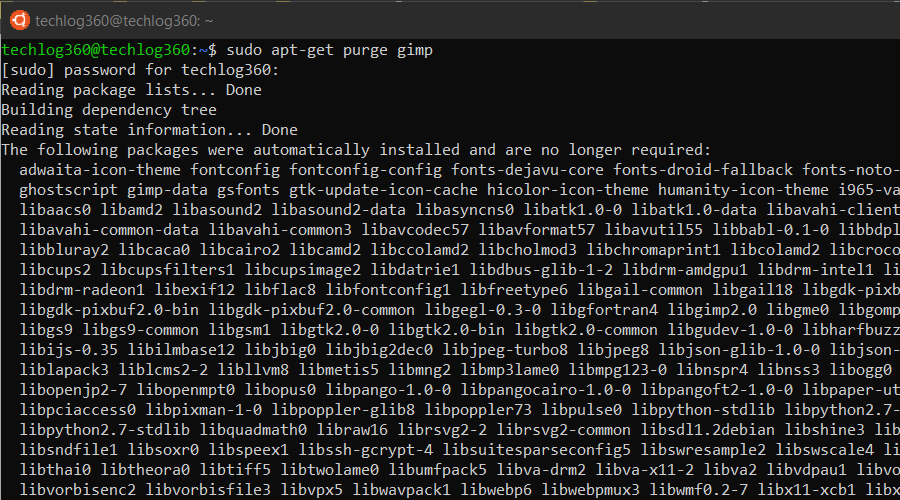
#SUDO APT UPDATE#
Using apt-get update and apt-get upgrade is essential for keeping your Linux system up-to-date with the latest package releases. In a nutshell, "apt-get update" updates the package index files, whereas "apt-get upgrade" upgrades the actual packages installed on your system. The "apt-get upgrade" program downloads and installs the most recent packages, replacing any earlier versions that were already on your system. For more options, there are instructions for installing on.
#SUDO APT INSTALL#
To identify which packages require an upgrade, "apt-get update" is used to gather the necessary information. If youre on a Debian-based distribution, such as Ubuntu, try apt : sudo apt install git-all. With older Ubuntu versions, the official Flatpak PPA is the recommended way to install Flatpak. OTOH, apt-get upgrade is used to update installed packages to the most recent version. sudo chmod +x /usr/local/lib/docker/cli-plugins/docker-compose. It is advised to run apt-get update frequently in order to ensure that the system is aware of the latest available package updates. sudo apt-get update sudo apt-get install docker-compose-plugin. It downloads the most recent package information from the sources listed in the "/etc/apt/sources.list" file that contains your sources list. The command apt-get update is used to update the package index files on the system, which contain information about available packages and their versions. It is intended as an end user interface and enables some options better suited for interactive usage by default compared to more specialized APT tools like apt-get (8) and apt-cache (8). Sudo apt-get upgrade Apt-get upgrade vs Apt-get updateīoth apt-get update and apt-get upgrade are used to install packages in Linux, but they are used for different purposes. apt provides a high-level commandline interface for the package management system. To update the packages using apt-get upgrade use the following command: This command only upgrades existing packages and does not install any new packagesīefore using "apt-get upgrade", it's recommended to run "apt-get update" to ensure that your system has the latest information about available package updates. The "apt-get upgrade" command is used to upgrade already installed packages to the latest version, based on the information obtained through a previous "apt-get update" or "apt update" command. Running sudo apt-get update within the runner, it occasionally fails (i.e. To update the packages using apt-get update use the following command:Īll the package information is stored in /etc/apt/sources.list path. Describe the issue Were using ubuntu-20.04-xl in GitHub Actions. This command downloads the updated package information as specified in the sources file when executed. deb packages installed by the DPKG program. The system tracks changes to each package when a new version is released using either the "apt-get update" or "apt update" command. APT is the package manager/dependency solver for the Debian ecosystem, i.e.

In Linux, every installed package has its details stored on the system. In this article, we'll explore what these commands do, how they work, and why they're important. Two commonly used commands in APT package management are apt-get update and apt-get upgrade. APT makes it easy to keep your system up-to-date with the latest package releases.

#SUDO APT SOFTWARE#
If you don’t use the update command, you won’t refresh the cache, which would not give you a clue about the available package updates.APT (Advanced Packaging Tool) is a package manager used for installing, updating, and managing software packages on Linux systems, particularly Debian and Ubuntu. This ofcourse is just a simplified big picture of what how apt update works. The metadata includes information pertaining to the version, repository, dependency, and other relevant package details. On giving the sudo apt update command, apt talks to the repositories in the cloud to get the latest available versions of each of the apps installed in our systems. Your Linux system has an available cache of software (packages), which contains the necessary metadata related to those packages. On the other hand, the apt upgrade command downloads and installs available updates on your machine in one go. sudo apt install microsoft-edge-dev At this point, you have Edge installed on your Ubuntu system.
#SUDO APT DOWNLOAD#
The update command gives you an idea about the available updates, but it does not download or install the updates within your distro. apt upgrade: A ComparisonĮven though the apt update command might seem like the obvious go-to option to update your packages on Linux, it’s not entirely the case. But the point is, what's the difference between these commands, and how can you use them to update your Linux packages? apt update vs. When looking for ways to update packages, you will come across commands like apt update, apt upgrade, and related versions.


 0 kommentar(er)
0 kommentar(er)
